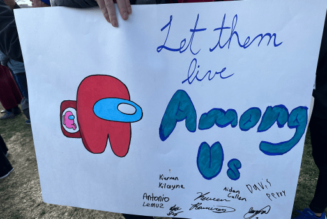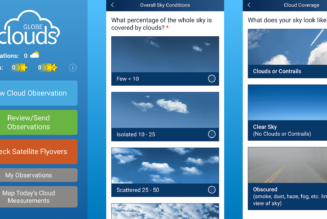
I am a Catholic high school teacher, and, by May 1st, I will have taught five weeks of online education. This is an act of obedience to various authorities so that, instead of having nothing available for my quarantined high school students, they will have something. I have already explored “group chat,” “shared screen,” and “simultaneous writing documents”; I have successfully communicated to various teenagers some key facts about calculus, Virgil, and economic theory. But I have not — and cannot — fully offer them Catholic education.
There are three fundamental reasons why this is the case. First, Catholic education demands access to the sacraments, and this necessarily demands presence; moreover, the Church’s own sacramentality, in which the Catholic school participates, is maximized in “real” reality rather than virtual reality. Second, Catholic education is an encounter with Christ in and through the encounter with teachers. Catholic education works through a student’s imitation of the teacher whose words and actions draw out young people to see, know, and desire the way, the truth, and the life. Virtual screens truncate the fullness of one’s modeling to others. Finally, Catholic education follows the divine pedagogy. We meet students where they are; we see them and know them, and this unlocks the fullness of education. No screen can fully manifest the person whom I am teaching.
Catholic Education Is an Ecclesial Act
The Second Vatican Council’s Dogmatic Constitution on the Church begins with the claim that “the Church is in Christ like a sacrament or as a sign and instrument both of a very closely knit union with God and of the unity of the whole human race.”1 Thus, every Catholic school teacher participates in the sacramentality of the Church and must strive through the cultivation of natural and supernatural virtues (by grace and free will) to image the truth of this union.
Now, it is a constant teaching of the Church that sacraments but be done with ministers present. No one can receive virtual communion. Confession cannot allow for any medium. Baptism must touch person to water, and so on. The Pontifical Council for Social Communications in 2002 is very clear on the necessity of presence over virtual reality: “Virtual reality is no substitute for the Real Presence of Christ in the Eucharist, the sacramental reality of the other sacraments, and shared worship in a flesh-and-blood human community. There are no sacraments on the Internet; and even the religious experiences possible there by the grace of God are insufficient apart from real-world interaction with other persons of faith.”2 Thus, the highest form of sacramentality is when an outward sign of holiness is given by a person fully present.
One might argue that the Church’s call to evangelize through television (ETWN), youtube (Word on Fire) or Papal twitter suggests a new face of the sacramentality of the Church in social media. However, the priority of presence in church evangelization cannot be underscored. Because the goal of evangelization is to bring Christ’s real presence to another and Catholic schools exist to do this through the integral formation of youth, it cannot be said that tele-Angelica, e-Barron or tweeted-Pope is in any way equal to meeting them in person. At best, virtual realities of saints are signs pointing to the actual realities of these persons.
Thus, the same Council quoted above states, “Although the virtual reality of cyberspace cannot substitute for real interpersonal community, the incarnational reality of the sacraments and the liturgy, or the immediate and direct proclamation of the gospel, it can complement them, attract people to a fuller experience of the life of faith, and enrich the religious lives of users.”3 We cannot rule out the role of the Holy Spirit in using these quasi-sacramental realities to help people encounter Christ. Nevertheless, reliance on God’s initiative alone risks a presumption that is immoral. We must work to make manifest the full sacramentality of the Church as best we can, and this happens only when we make present those members of the apostolate whose holiness is visible and tangible to others. At the core of the universal call to holiness4 is a call to make Christ really present to others in and through ourselves; this cannot be fully accomplished if it is only virtually practiced.
Catholic Education Is Mimetic
The second reason that Internet instruction can never be fully Catholic education is that education is intrinsically a mimetic experience based on the student’s imitation of the teacher. Students can imitate ideas and ways of thinking for sure; this is the didactic style of mimetic education. But students also imitate the entire way of being, the hopes and desires of their teachers. Listen to the Sacred Congregation for Catholic Education in 1972:
“A teacher who is full of Christian wisdom, well prepared in his own subject, does more than convey the sense of what he is teaching to his pupils. Over and above what he says, he guides his pupils beyond his mere words to the heart of total Truth.”5 Furthermore, “the nobility of the task to which teachers are called demands that, in imitation of Christ, the only Teacher, they reveal the Christian message not only by word but also by every gesture of their behaviour. This is what makes the difference between a school whose education is permeated by the Christian spirit and one in which religion is only regarded as an academic subject like any other.”6
This text is the first “follow-up” document to Gravissimum educationis, the Second Vatican Council’s Declaration on Catholic Education.7 It is part of the heart of the Church’s self-reflection on Catholic education in the modern world. The insight is striking: the student’s personal encounter with the teacher, even watching his/her very gestures, is essential to their formation, their authentic Catholic education.
One is reminded of the influence that St. Ambrose had on the pre-saint Augustine in his early Milan days. The young man encounters the holy Bishop and is drawn in to his way of study and prayer. He notes the following: “But while reading, his eyes glanced over the pages, and his heart searched out the sense, but his voice and tongue were silent.”8 Every detail of the role model is key for the student who sees in each little gesture a commitment, a desire, a way of being that either does or does not point to Christ. Trying to communicate the fullness of one’s way of being over Zoom-chat is a fruitless venture. The person is truncated by the virtual experience, and the capacity for conveying the fullness of Catholic truth is, thus, weakened.
Catholic Pedagogy Follows the Divine Pedagogy
The personal dimension of teaching goes the other way, too. If students need to encounter the full person of their teacher who brings them Christ, it is also the case that teachers need to encounter the full person of their students. One of the key elements of pedagogical instruction is the process of assessment, evaluating how much a student has gleaned from a lesson or experience. Sometimes assessment can be in the form of a test or project, but by far the most effective form comes from watching the body language of a student in a day-to-day situation. Once a teacher gets to know a student, it is easy in person to determine how effectively that child is or is not picking of the material, staying on task, remaining focused, enjoying the work, responding to the truths, etc. Catholic teachers must follow the divine pedagogy which meets students where they are in their developmental stage or learning capacity with respect to a given topic. This means that we meet them in person and intuit from “the language of the body” (that is, a sacramental understanding of the person who is a union of physical body and spiritual soul) what is going on their inside by observing their outside. It is absurd to think that the subtle — or even not-so-subtle — clues of our students’ gestures could be communicated through the internet.
Further Research
Thus, sacramental presence, mimetic instruction, and divine pedagogy all demand in-person non-mediated teacher-student interaction for authentic Catholic education to take place. These are only a few of the principles that demand that we not attempt to replace in-person Catholic schools with virtual schools. Anecdotally, I can report that, after one day of full-time online teaching, I and many of my students had significant headaches and fatigue. This testimony suggests that more needs to be done in neuroscientific and biophysical research into the effects of various forms of internet-based pedagogies. This research is especially important for young people, in whom development is much more rapid and influential.
The internet can certainly assist in our journey as individual humans and society to achieve our last end in God. However, inasmuch as its use goes contrary to our nature, against our created purpose, we must reject it as failing to help us become fully human. The glory of God is man fully alive — not merely virtually attendant.
Conclusion
At the core of the move to online education is a set of different factors that all can be reduced to the principles of efficiency, ease, and convenience. How do we bring together different people who, for safety, political, or geographical reasons cannot be together? We use the internet, the online imaging resources. Yes, there are many areas in human life in which the strictly utilitarian value of such gathering is key. However, the demands of a religion centered around a real presence of God-made-man demand that we carefully discern when certain aspects of our faith life can be substituted by this tool, however much it “saves us” in cost, time, or suffering. Catholic education is one area of our religious life that maintains fundamental connections to the sacramental life and being of the Church such that key areas of its nature and function can never be substituted by online activity. The one thing I hope we all learn from the internet-based “coronavirus classroom” is that we need to get back in the real Catholic classroom, fully present to one another, as soon as possible.
<!–
–>







